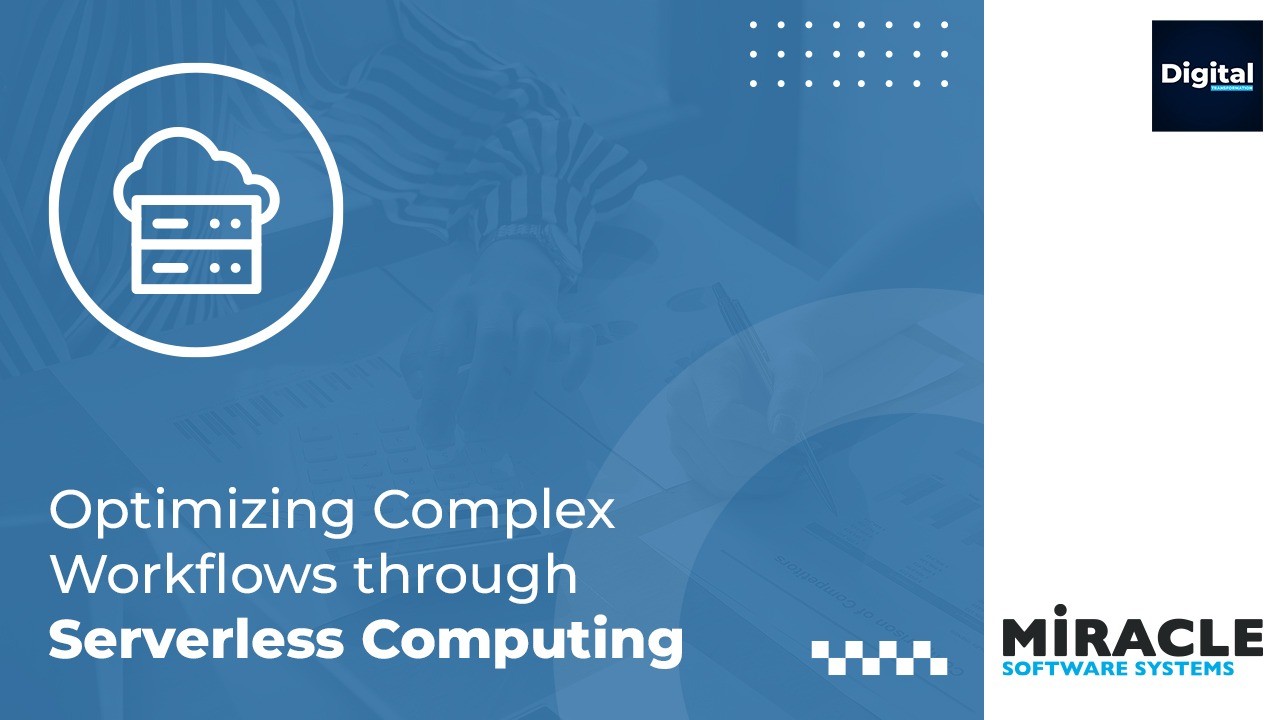
Optimizing Complex Workflows through Serverless Computing
Miracle Software Systems, Inc
Your Partner for Digital Transformation Journey
Managing complex workloads with traditional approaches can be challenging for businesses as they need heavy infrastructure. This makes it difficult for companies striving to build scalable and lightweight applications and reduce their time to market. Serverless computing is an approach that enables application development by minimizing infrastructure management, providing the agility and scalability needed to help businesses stay competitive and focused on innovation.?
Automating Workflows with Serverless Workflow Management?
Serverless computing helps organizations handle millions of transactions, data flows, and tasks on interconnected systems without the need for integrations across the platform or services. It streamlines these processes by breaking down complex tasks into smaller, event-driven functions that execute only when needed. Here’s how serverless computing facilitates workflow management:
1. Event-Driven Architecture
Serverless platforms automate workflows through event-driven architectures. Whether responding to database changes, triggering a process from an API call, or reacting to user input, serverless functions run only when specific events occur. This adaptability reduces bottlenecks and enhances responsiveness, making workflows more efficient.
2. Scalability and Flexibility
Traditional infrastructure management often requires provisioning servers with enough capacity to handle peak loads, resulting in idle resources during downtime. Serverless computing automatically scales with demand, allowing businesses to focus on building complex workflows without worrying about performance limits or over-provisioning.
3. Reduced Operational Complexity
Managing the infrastructure for complex workflows can be daunting. Serverless computing removes this overhead by delegating the responsibility for uptime, server management, and scaling to cloud providers. By focusing on functions rather than servers, teams can develop and maintain workflows more efficiently, improving productivity and innovation.
领英推荐
4. Cost-Efficiency
Its functions run based on demand, so you only pay for the resources you use. This is especially useful for managing workflows with varying or unpredictable workloads, leading to cost savings in the long run.
5. Seamless Integration
It seamlessly integrates with various serverless functions and services such as AWS Lambda, Azure Functions, or Google Cloud Functions. They provide connectors and triggers that allow developers to invoke functions automatically based on events or conditions.
6. Monitoring and Visibility?
Developers can monitor the progress of workflows, task execution, and capture metrics and logs for troubleshooting and optimization after workflow execution. This visibility helps identify bottlenecks, improves performance, and ensures smooth application operation.
7. Developer Productivity?
It improves developer productivity by eliminating infrastructure management, providing a higher-level interface, and serverless workflow services, allowing them to concentrate on business logic and application requirements. This leads to faster development cycles and greater flexibility in responding to evolving business needs.
The Future of Serverless in Complex Workflows
As technology advances, adopting serverless computing will become crucial for organizations to manage complex workflows. It can drive automation, reduce operational complexity, and scale seamlessly aligning perfectly with the needs of modern enterprises. By this businesses can focus on innovation and growth without being burdened by infrastructure concerns. Serverless is not just about running code it’s about rethinking how we build and manage systems, workflows, and applications in a more efficient, scalable way.